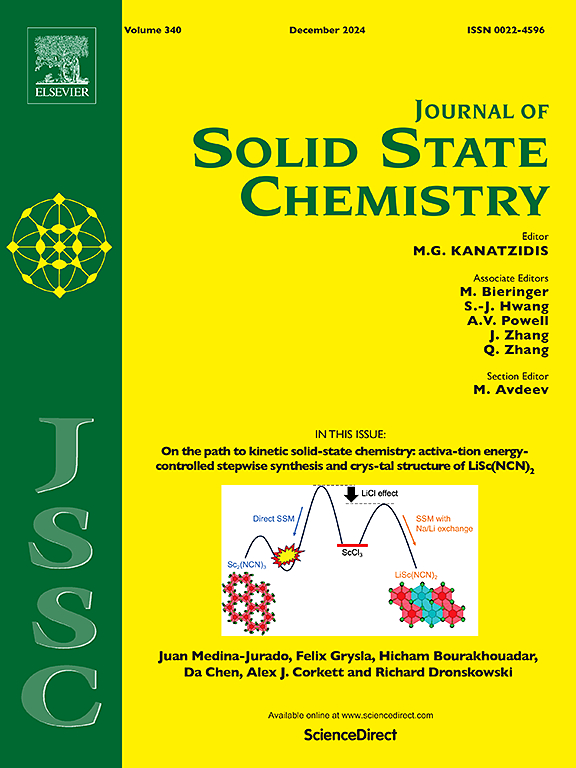Crosslinking ionic oligomers sol-gel synthesis of porous amorphous magnesium hydroxide and its application in Pb2+ adsorption
IF 3.2
3区 化学
Q2 CHEMISTRY, INORGANIC & NUCLEAR
引用次数: 0
Abstract
Porous magnesium hydroxide with high specific surface area is widely used in environmental applications. In traditional sol-gel methods, the preparation of high-surface-area porous magnesium hydroxide (HSA-PMH) necessitate the use of highly reactive alkoxide as a precursor, thereby limiting its development. Herein, HSA-PMH was prepared by a simple crosslinking ionic oligomer sol-gel method using MgCl2·6H2O as precursor, short-chain alkohol as solvent and triethylamine (TEA) as alkaline reagent and capping agent. The choice of alkohol solvent plays a significant role in influencing the degree of crystallinity, morphology and porosity of HSA-PMH. Alkohol solvent with high dielectric constant favors the formation of HSA-PMH. When the molar ratio of TEA to Mg2+ is 30:1 and methanol is used as the solvent, the specific surface area of HSA-PMH reaches 538 m2∙g−1. The Pb2+ adsorption properties of the HSA-PMH were further investigated. It was found that 98 % of the Pb2+ could be removed within 15 min, and the maximum adsorption capacity calculated by Langmuir isotherm model reached 4245 mg∙g−1. The results indicate that the synthesized HSA-PMH is an excellent adsorbent for Pb2+, boasting a high adsorption capacity and rapid rate of adsorption.

求助全文
约1分钟内获得全文
求助全文
来源期刊

Journal of Solid State Chemistry
化学-无机化学与核化学
CiteScore
6.00
自引率
9.10%
发文量
848
审稿时长
25 days
期刊介绍:
Covering major developments in the field of solid state chemistry and related areas such as ceramics and amorphous materials, the Journal of Solid State Chemistry features studies of chemical, structural, thermodynamic, electronic, magnetic, and optical properties and processes in solids.
 求助内容:
求助内容: 应助结果提醒方式:
应助结果提醒方式:


